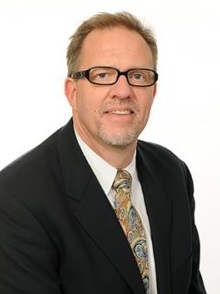Latest Advances in Stalled Wounds
February 9, 2024
What is a stalled wound, and why does it matter?
A stalled wound is a wound that’s no longer making normal healing progress, or a wound that won’t heal on the expected trajectory. Clinically, this can be defined as failure to improve at least 25% in area and/or volume in a four-week period, anytime in the course of treatment.
Healthcare providers who see these types of wounds may not recognize the urgency and consequences of stalled wounds. After all, the wound may not be getting better, but it’s not getting worse. Perhaps it even improved over the first several weeks of treatment—but then healing slowed. This scenario might lull a healthcare provider into feeling somewhat satisfied with the net improvement.
However, data show that if a wound’s healing stalls anytime over the course of treatment, the likelihood of ever achieving closure drops dramatically. And when a wound doesn’t close, your patient is 20 times more likely to seek emergency treatment and be admitted to the hospital.
Therefore, it is imperative that this patient population attends weekly visits for wound assessment and measurement. When a wound stalls, healthcare providers should provide early intervention with more advanced treatment modalities or refer to a wound care specialist.
Work to establish a predictive model
Research on stalled wounds has been appearing in the literature for more than a century.
In 1910, Alexis Carrel demonstrated that delayed wound healing was predictive of overall healing. Carrel’s work also showed that prompt intervention could get wound healing back on track. Since then, more studies have shared that theme: Stalling is predictive of whether a wound will ultimately heal or not. However, progress in understanding why wound stall has been slow.
Recently, Healogics and the University of Southern California have been conducting research with the ultimate goal of developing an evidence-based model that can predict which wounds will heal and which ones will stall. The collaborators are retrospectively analyzing Healogics’ patient data, looking at differences in wound sizes week to week as well as ultimate outcomes. Findings so far include:
- The types of wounds most likely to stall are radiation, arterial, and pressure ulcers.
- The larger a wound is at presentation and the longer the person has had it, the more likely it is to stall at some point during treatment.
- The risk of stalling is highest between week 4 and week 10 of treatment.
- Patients with a stalled wound are 38% more likely to stop treatment.
Chronic inhibitory bacterial load
Additional new research looks at the effects of a chronic inhibitory bacterial load (CIBL) on wound healing. CIBL describes the chronic presence of bacteria in a wound or its surrounding area, at loads which can damage tissues and inhibit healing. CIBL may require clinical intervention even if symptoms of infection are absent.
David Armstrong and colleagues used MolecuLight fluorescence imaging technology to assess CIBL in 138 foot ulcers. More than 90% of the wounds had significant bacterial loads, but only 12% of all wounds demonstrated any signs of infection. The imaging also revealed high loads in the region surrounding wounds (periwound area), which is often overlooked during clinical assessments.
Importantly, analysis showed a strong correlation between bacterial load and stalled wound healing. In general, the higher their bacterial load, the more likely ulcers were to stall. Over half (61.5%) of wounds with the highest bacterial loads had stalled healing.
Some wound care centers are now implementing the study’s MolecuLight technology at the point of care to assess the wound microbiome. The handheld, noncontact fluorescence camera holds promise to identify causes of stalled wounds and help clinicians practice antimicrobial stewardship.

By William J. Ennis
William J. Ennis, DO, MBA, MMM, CPE, is chief medical officer of Healogics, the nation’s leading provider of advanced wound care. He also serves as the Catherine and Francis Burzik Professor of Wound Healing and Tissue Repair and chief of the Section of Wound Healing at the University of Illinois at Chicago’s Division of Vascular Surgery.

